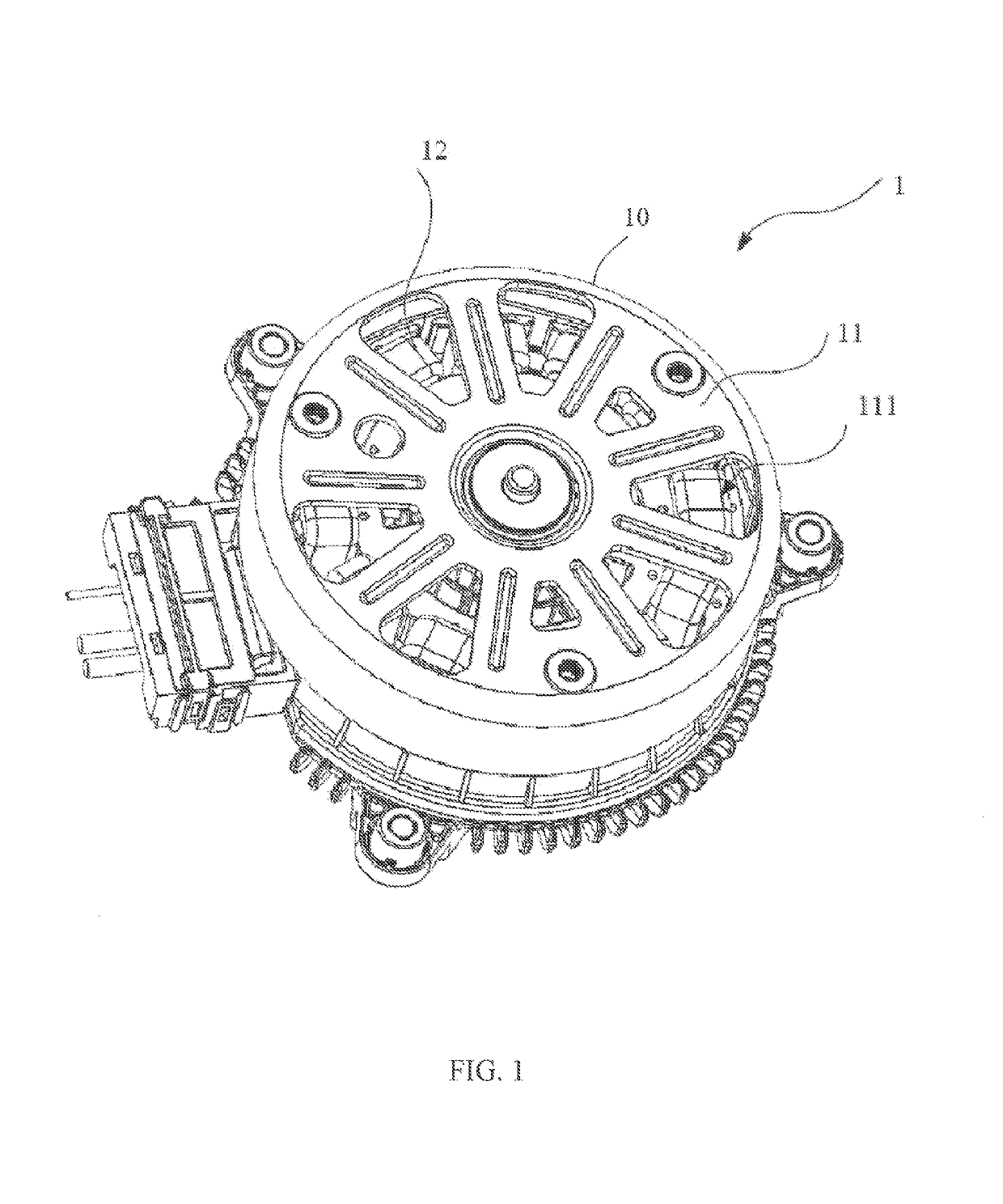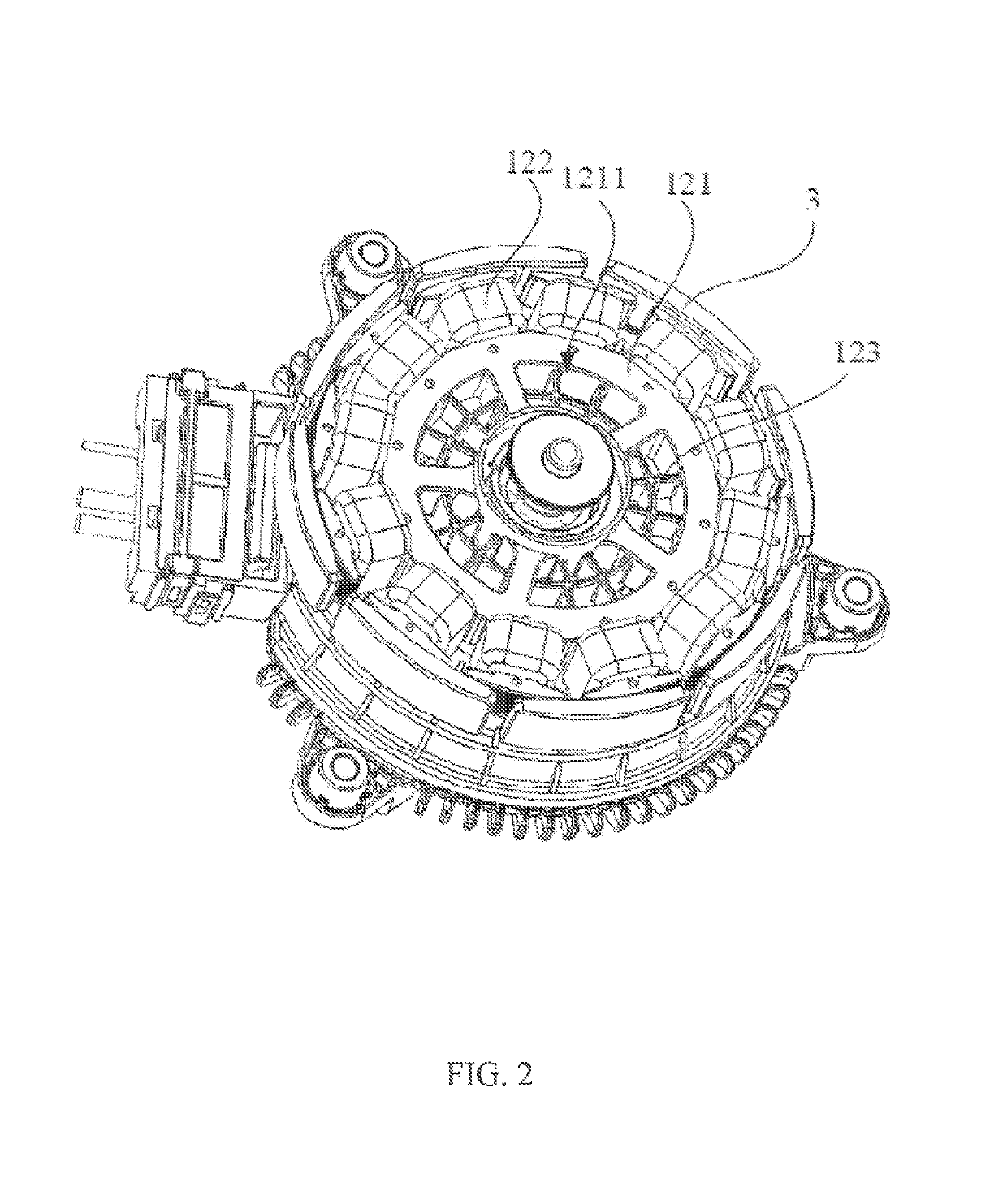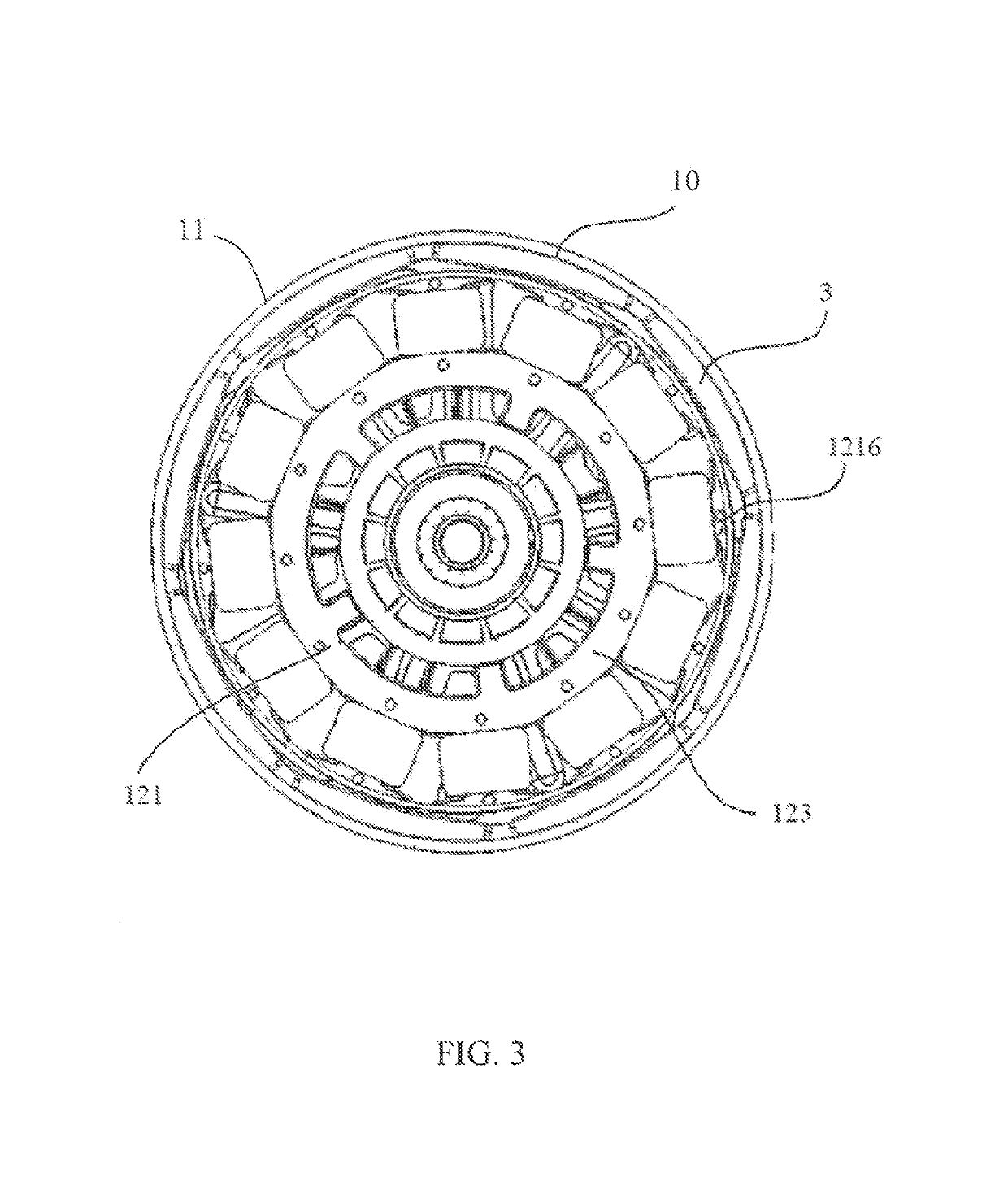Permanent magnet motor
a permanent magnet, motor technology, applied in the direction of magnetic circuit rotating parts, magnetic circuit shape/form/construction, windings, etc., can solve the problems of high cogging torque and poor motor efficiency, long magnetic path, high magnetic resistance, etc., to reduce the cogging torque of the motor, increase the motor efficiency, and reduce the noise of the motor
- Summary
- Abstract
- Description
- Claims
- Application Information
AI Technical Summary
Benefits of technology
Problems solved by technology
Method used
Image
Examples
Embodiment Construction
[0039]Referring to FIG. 1 through FIG. 3, a motor 1 in accordance with the preferred embodiment of the present invention includes a stator 12 and a rotor 10 rotatable relative to the stator. The rotor 10 includes an outer housing 11 and a plurality of permanent magnets 3 fixed to an inner surface of the outer housing 11 forming permanent magnet poles of the rotor. The stator 12 includes a stator core 121, stator windings 122 wound around the stator core 121, and a winding bracket 123 for insulating the stator core 121 from the stator windings 122. The winding bracket 123 is formed over an outer surface of the stator core 121 by an over-molding process, but exposes surfaces of tooth tips 1216 of the stator core 121 that confront the permanent magnet poles 3. The permanent magnet poles 3 are arranged surrounding an outer side of the stator core 121 and stator windings 122.
[0040]An end wall of the outer housing 11 of the rotor has a plurality of ventilation openings 111. Correspondingl...
PUM
 Login to View More
Login to View More Abstract
Description
Claims
Application Information
 Login to View More
Login to View More - R&D
- Intellectual Property
- Life Sciences
- Materials
- Tech Scout
- Unparalleled Data Quality
- Higher Quality Content
- 60% Fewer Hallucinations
Browse by: Latest US Patents, China's latest patents, Technical Efficacy Thesaurus, Application Domain, Technology Topic, Popular Technical Reports.
© 2025 PatSnap. All rights reserved.Legal|Privacy policy|Modern Slavery Act Transparency Statement|Sitemap|About US| Contact US: help@patsnap.com



